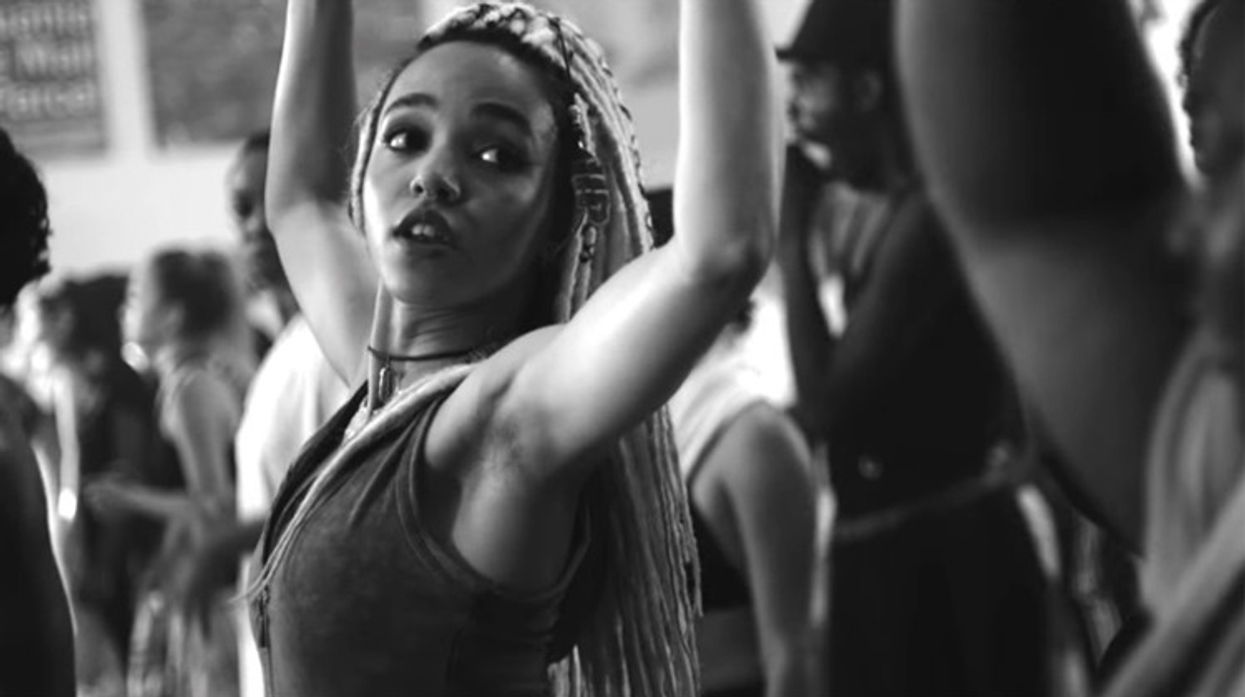See Some of the First WeTransfer-Funded Films—And Learn How Yours Can Be Next
WeTransfer is commissioning films now. Here’s how it works from the company and the filmmakers.

There’s an idea in the business community that has almost become a mantra in recent years: every company is a media company. This essentially means that traditional brands need to be producing content—from social media to movies—to grab audience attention. Sometimes this seems extreme. Do we really need a Doritos-branded TV series?
Sometimes, however, this relationship between brands and media creation makes perfect sense, and it can be mutually beneficial for the companies and for independent filmmakers looking to get their work funded and seen. Take WeTransfer, for example. According to the company’s VP of content, Rob Alderson, 75% of its 40 million monthly active identify as “creatives.”
In recognition of this, Alderson and his content team are tasked with “telling unexpected stories about creative minds, to help spark people’s creative ideas.” Thus, the team is actively looking for creative projects to support and showcase on its WePresent platform, including films. So far, they’ve worked on a documentary about Baltimore with FKA twigs and Nick Walker (above), and an exploration of how Bjork and Jesse Kanda collaborate. They’ve also recently commissioned their first animations, and worked with Seed & Spark to offer grants to filmmakers as part of its 100 Days of Optimism crowdfunding rally.
The longest project WePresent has supported is Marisa Aveling and Sean Mattison’s 17-minute documentary, Mr. Wash. Of the story on a former inmate and self-taught painter who created hundreds of paintings in prison, Alderson said, “We all fell in love with the story immediately and felt honored to help get it out in the world.” Watch the film before and then read our Q&A with the filmmakers about creating the project and working with WeTransfer.
No Film School: How did your relationship with WeTransfer come about and at what point did they get involved with Mr. Wash?
Marisa Aveling & Sean Mattison: We were aware of WeTransfer’s interest in the visual arts and in promoting creativity/social justice issues so they ended up being a natural partner for the film. They had also recently established a presence in Los Angeles, and since our story is set in LA, there were certain synergies between the story we were trying to tell and the communities they were trying to support.
NFS: Did you have any particular challenges pitching or selling this film because it focuses on a specific social issue, or did that help you?
Aveling & Mattison: We initially approached various online media outlets about the film with limited success. Many companies that are funding short form documentaries of this kind already have their production calendar in place for months or even years in advance, or they are looking for a specific type of story that diverges from what they’ve done in the past, so both of these factors can be a barrier to entry in terms of pitching an idea.
The prison system and criminal justice reform have become a larger part of the national debate in recent years, but we don’t necessarily feel like this made the project any more or less likely to be supported. The differentiating factors here were Wash’s charisma, his faith, and his commitment to making art.
“Don’t let a ‘no’ discourage you from telling a story that you feel is important to tell.”
NFS: There are several films out about the US prison system. How did you differentiate yours, and how did you decide on that approach?
Aveling & Mattison: There have been a number of phenomenal films about the prison system that have come out recently: 13th and Time: The Kalief Browder Story stand out in particular. Our approach to this film was not to focus so much on Wash’s time in prison but to gain an understanding of his vision as an artist and expose the ripple effect that incarceration has on a prisoner’s family and friends. We did not rely on any interviews for this film, but instead used Wash’s inner monologue to punctuate scenes of him becoming reacquainted with his loved ones and reflecting on his past.
NFS: The visuals really look beautiful. What did you shoot with, and why?
Aveling & Mattison: We shot the film on the RED Epic with Cooke Anamorphic lenses, with the exception of a few pick-up shots on the Canon C300 Mark II / Sony A7S II. We made the decision to go with this camera package due to its availability (our AC owned it) and our desire to shoot in the anamorphic aspect ratio, which is not as common on documentaries of this nature.
The characteristics of the Cooke lenses gave us a certain texture and bokeh that was very unique and really pushed the visual style of the film in the right direction from our and our DP Sam Ellison’s perspective.
NFS: What advice do you have for other short doc-makers seeking funding and/or distribution for their films?
Aveling & Mattison: Knock on as many doors as possible. Don’t let a ‘no’ discourage you from telling a story that you feel is important to tell.
Do you think you have a project that’s right for WePresent? Alderson emphasizes that “We’re looking for the unusual and unexpected, stories that feature creative thinking but push the boundaries of what that means. We’re also drawn to stories that show how creativity can be a force for good.” If your film fits the bill, email your pitch or proposal to ideas@wetransfer.com.
















